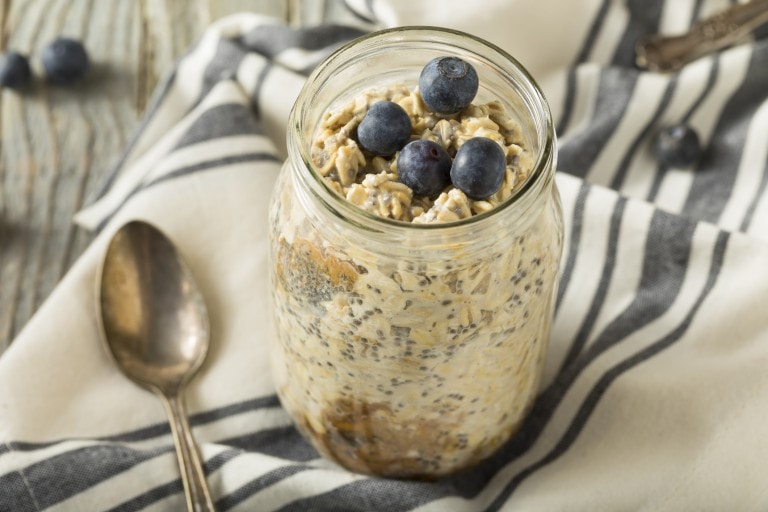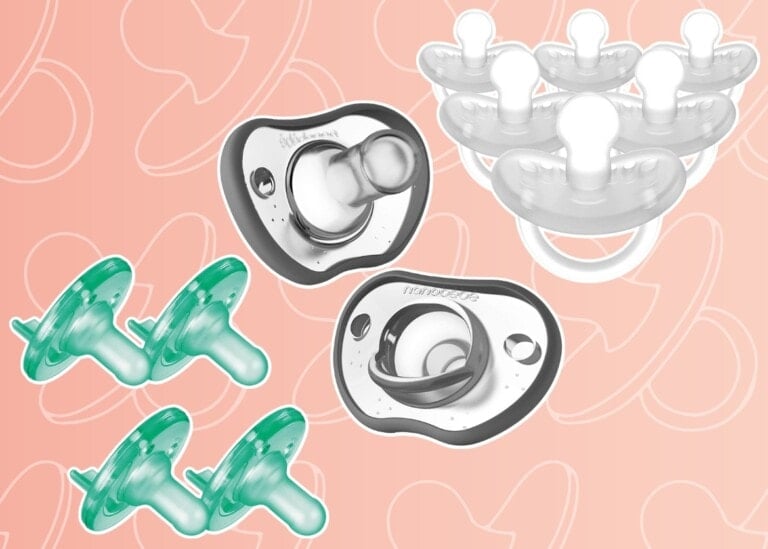There is a common fear that many mothers have if they are nursing or are planning to breastfeed their babies. “Will I be able to make enough milk?” Some women can produce a tremendous amount, and others must work a bit to increase their milk supply. The good thing is that breast milk production is a demand and supply process. To speed milk production and increase your milk supply, the key is frequently removing milk from the breast so that less milk is accumulated in the breast between feedings.
Top Suggestions on How to Increase Your Breastmilk Supply:
1. Breastfeed Frequently for as Long as Your Baby Will Nurse
Try to get in at least 8 to 16 feedings in 24 hours. That means you should be nursing every 2-3 hours each day. I recommend not to rush them. You can stimulate their feet and stroke their head to help keep them awake and actively feeding, but I wouldn’t take them off the breast if they aren’t ready. The more often your baby is breastfeeding, the more your body is told to make milk.
2. Offer Both Breasts at Each Feeding
I recommend trying “switch nursing.” Watch your baby as she nurses. She will nurse vigorously for a few minutes, trying to initiate your letdown, then will start slowing down and swallowing less often. She may continue this slower sucking for a long time and then be too tired to take the other breast when you try to switch sides. Try switching her to the other breast as soon as her sucking slows down, even if it has only been for a few minutes. Do the same thing on the other breast until you have offered each breast twice. Then let your baby nurse as long as she wants. Switch nursing will ensure that both breasts receive adequate stimulation, which can help increase your milk supply.
Another tip: When breastfeeding, use a milk catcher to catch the milk that your other breast is leaking to save it! Two great options are the Haakaa and Milkies Milk-Saver. Rather than soaking up your nursing pads, you’ll be so grateful that you caught your milk that you can use later. Every drop counts!
3. Try Massaging Your Breast Gently as You Nurse
Massaging your breast can help the rich, higher-calorie hindmilk let down more efficiently. Breast compression is a simple, easy, and effective way to help your baby get more milk. Newborn babies will often fall asleep at the breast when the milk flow slows down, even if they haven’t gotten enough to eat. Breast compression helps to continue the flow of milk once the baby starts falling asleep at the breast, so the baby gets more hindmilk.
Below is a video that shows Dr. Jack Newman helping a mom use breast compression to help a baby get more milk as she nurses.
4. Make Sure That You Are Using Proper Breastfeeding Techniques
Check your positioning to make sure that baby is latching on correctly. If the areola is not far enough back in their mouth, they may not be able to compress the milk sinuses effectively to release the milk. Make sure the baby is not just sucking on the nipple but is latched deep on the breast. If you are experiencing lots of pain with breastfeeding, it could be a sign your baby is not latching correctly. (Learn 6 rules to get the best latch)
5. Do Skin-To-Skin
Skin-to-skin (also known as kangaroo care) is when you place your baby (only wearing a diaper) on your bare chest and a blanket around both of you to provide warmth. There are many benefits of skin-to-skin, and one of them is helping increase your milk supply. When a new mom makes skin-to-skin contact with her baby, it increases her oxytocin and prolactin levels.1 Both hormones help your body make and release breast milk.
6. Double Pump After Feedings
The next best way to increase your milk supply is to double pump (use a breast pump on both breasts) after you nurse your baby. After you have breastfed your baby, done skin-to-skin, and have gotten comfortable, begin to pump. Even if you are not expressing any milk, suckling stimulates your breasts to make more milk. Don’t give up and think it isn’t working if the milk isn’t flowing.
How Often to Pump
Ideally, if you have a low milk supply, you should breastfeed every two hours and follow it with a pumping session. If this schedule seems overwhelming, pump after as many feedings as often as possible. (I would say no more than 20 minutes per pumping session. These need to be short bursts but frequent.) And, at the very least, pump after your first feeding in the morning. This is when your supply is likely to be at its highest.
How Long to Use the Breast Pump
If you haven’t expressed any milk after 10 to 15 minutes, shut the pump off and repeat the process after your next feeding. If you can express milk, continue to pump for at least 5 minutes after the last drop of milk falls. You may experience what is called a “second letdown.” This occurs when expressing milk until the flow stops, you continue to pump, and after several minutes milk begins to express again. If you have a second letdown, keep pumping for five minutes after the second flow stops. It is important to note that you should not be in pain when pumping. If you begin to feel pain, please stop immediately.
Another thing I’d like to add is — please don’t let the breast pump equipment and the thought of frequent pumping intimidate you. Do as much as you can, as often as you can. Remember, every little bit helps.
See also: How to Clean Your Breast Pump and Why It’s Important
7. Be Sure You Have Access to a Good Quality Pump
Unfortunately, not all breast pumps are created equal, and a good quality breast pump can really help. Great choices include a hospital-grade rental pump or a good quality double electric, like a Motif Luna (read our full review of The Luna Breast Pump from Motif) or Spectra S2. If cost is an issue, check with your health insurance. Many health insurance companies will cover the cost.
Tip: Often, this is listed under “durable medical equipment” in your insurance policy. You may need to refer to that in your call—and be persistent!) If you do not want to purchase a pump, consider renting a hospital-grade breast pump for a few days. Hospital-grade pumps have strong, more powerful motors and are the most efficient pumps you can use. They are bigger and heavier, so they aren’t as portable as other pumps. The hospital, an LLL Leader, or your childbirth educator should be able to provide you with the information you need to find a breast pump rental station.
8. Figure Out the Right Setting for You
When pumping, make sure you have the suction on your breast pump at a comfortable setting. Many pumps have adjustable suction levels. Turning it up as high as it will go is unnecessary. Many of them have a massage mode and switch to an expression mode to help stimulate your breast as your baby would. Play around with the different settings and only set it as high as it feels comfortable and lets you express milk. If you’re not expressing milk, choose a setting based on comfort. Pumping may not feel “natural,” but it should not be painful. You might be surprised to find that a specific setting helps you pump more milk than others.
9. Get the Correct Flange Size
This is a tip that many people don’t know about, but it can help! Standard flange sizes included with a breast pump are between 24 to 28 millimeters. However, not all women fit these sizes. Some need smaller flanges, and others need larger flanges. When you have the wrong size breast flanges, they can cause nipple trauma and pumping discomfort, and you may not fully empty your breasts! I found that I pumped an additional ounce once I had the correct breast flange size. Ensure you have the right breast pump flange size for more effective pumping.
10. Power Pump
Many moms swear by power pumping. It’s a technique that mimics cluster feeding and can help increase your milk supply. You’ll need to replace one of your pumping sessions with a power pumping session, which will take about an hour. You’ll first pump for 20 minutes, take a break for 10 minutes, pump again for 10 minutes, take another 10-minute break, and pump one more time for another 10 minutes. You can do this once or twice daily for several days to see if your supply increases. It should since it’s telling your body to make more milk!
11. Avoid Bottles and Pacifiers, if Possible
When trying to increase your milk supply, you want your baby’s sucking needs met at the breast. If your baby needs to be supplemented, try using a cup, syringe, or tube feeding system, especially in the beginning (babies under two weeks old). This is less of a concern with older babies who are well-established with breastfeeding, as they are much less likely to have trouble switching back and forth between breast and bottle.
12. Nourish Yourself
Try to eat well and drink enough fluids. (Here are some great lactation snacks.) Drink to thirst, usually 6-8 glasses daily, if not more. (Both under and excessive over-hydration can decrease your milk supply.) Your diet doesn’t have to be perfect, but you need to eat enough to keep yourself from being tired and to help with your production. It’s easy to get overwhelmed with baby care and forget to eat and drink enough; however, many women claim they are ravenous when breastfeeding, so it might not be a problem. Just ensure you’re eating enough healthy foods since what you eat also nourishes your child.
13. Don’t Try to Diet While You Are Breastfeeding
Avoid dieting, especially in the beginning, while establishing your supply. You need 450-500 extra calories each day while lactating, and if you eat high-quality foods and limit fats and sweets, you might notice that you’ll lose weight at a natural pace.
14. Use Relaxation Techniques While Breastfeeding
Stress is one of the biggest things that can decrease your milk supply.2 Meditating and using relaxation techniques can help lower your cortisol levels and help promote your breast milk production.3 Try to do this throughout the day and while breastfeeding your baby if you are experiencing stress or discomfort.
15. Get Rest
It can be hard to get rest when you have a hungry newborn. But it’s important for you to get rest when you can so that you don’t become overly exhausted because this, too, can decrease your supply. Some tips on how to help you get some rest are:
- Make a postpartum plan
- When possible, sleep when your baby sleeps
- Line up help: with your chores, to watch/hold the baby between feedings and after your pumping session. This can be from family members, friends, or hired help, such as a postpartum doula
- Accept help when offered
- Read more tips for getting rest during the newborn days
Right now, your only job is to feed your baby. Have others around you help with burping, diapering, bathing, and everything else with the baby. Others should also help take care of you and feed you, ensure you get a daily shower, help around the house with the chores, etc. Until you have gotten ahold of a good routine and are satisfied with your milk supply, prioritize your rest and enlist help.
16. Quit Smoking and Drinking Alcohol
Other things that can plummet your milk supply are smoking and alcohol.4 You should have eliminated these two things during pregnancy, so you might be used to saying no. But refraining a little longer might be more difficult for some than others. If you have difficulty quitting or cutting down on smoking and alcohol, talk to your doctor or midwife, or another professional for support.
17. Certain Foods May Help Increase Your Milk Supply
Some foods that generations of mothers also swear by and claim to help increase milk supply. Though no scientific studies prove these claims, enough mothers have said they saw a difference, so it’s worth a shot! Along with a well-balanced diet, try to include whole oats (like a bowl of oatmeal, oatmeal lactation cookies, or oat milk), garlic, pumpkin, and protein-rich foods.
18. Certain Supplements May Increase Your Milk Supply
Some herbal supplements have been used for many years to increase milk production, with the most popular being Fenugreek, Blessed Thistle, Red Raspberry, and Brewers Yeast (containing B vitamins). None of these herbal remedies have been proven scientifically to increase milk supply. However, moms have used them for hundreds of years with varying degrees of success. Many moms do see somewhat of an increase, and these herbs are generally considered safe, so it is okay for moms to try them along with other methods if they want to, but to have realistic expectations about the results. But before using any of these, consult with your care provider to ensure safety.
Note: Fenugreek is rated GRAS (generally regarded as safe), but when taken in large doses, it may cause lowered blood sugar, so it should be used cautiously by people with diabetes.5 It is in the same family as peanuts and chickpeas and may cause an allergic reaction in moms allergic to them. It has not been known to cause problems for the babies of the mothers who take it, but pregnant women shouldn’t use it because it may cause uterine contractions.6,7 If the Fenugreek is going to help, moms usually notice an increase in one to three days. Fenugreek is used in artificial maple flavorings and may cause a maple syrup odor in the mother or baby’s sweat. That means that enough of it is in your system to be effective.
19. Avoid Taking Hormonal Birth Control
Many women experience a loss in their milk production once they get back on their hormonal birth control. Some of them even dry up. Talk to your care provider before you decide on birth control and which option is best for you.
20. Check Your Medications
Some medications are not recommended when you begin breastfeeding.8 This is why it’s important to talk to your doctor about your prescriptions and any OTC medications you take before you start your breastfeeding journey. There are even some that can potentially decline your milk supply. Some of those medications are decongestants, antihistamines, and some for weight loss.
21. Get Help Early
Getting help before your baby’s weight loss becomes a big concern is important. Contact a local lactation consultant to come to your home to help. In almost all cases, once a healthy baby starts gaining weight, they won’t suddenly begin losing it unless there is an underlying medical problem with mom or baby. Contact your local IBCLC if you have further questions about increasing your milk supply.
22. Potential Medications Can Help
If all other methods of increasing milk production haven’t worked, two prescription medications are available that may be used to increase milk supply: Metoclopramide and Domperidone. Studies have shown an increase of 66 to 100% in milk production.9 Depending on the dose and how much milk the mother produced before taking these medications.
Metoclopramide
Metoclopramide (Reglan or Maxeran) has been used in infants for years to treat reflux.10 It’s also given to moms who’ve had a C-section to help prevent nausea. When a lactating woman takes it, it stimulates prolactin production. Also, it will nearly always increase milk output within 2-3 days. A 30-45 mg dose per day seems the most effective, though some studies have reportedly used a daily dose of 10 mg two to three times daily for seven to 14 days.17
Reglan
If you are taking Reglan, you should also address the cause of the low supply by correcting positioning or pumping frequently. Otherwise, your supply will return to previous levels when you discontinue taking it. Reglan has frequent side effects like fatigue, irritability, and depression, making its use for many nursing mothers unacceptable. Even though some mothers have taken Reglan to help increase their milk supply, doctors report that it can be risky since it can pass into the breastmilk and may be harmful to baby.11
Domperidone
Domperidone is another drug that is effective at increasing milk production.12 Like Reglan, it is also used to treat gastrointestinal disorders in infants and adults. It has the same side effect of increasing prolactin production by the pituitary gland. Domperidone (Motilium) has been used in Canada and other countries for decades. Domperidone has fewer side effects than Reglan because it does not enter the brain tissue in significant amounts.13 However, some women have had bad side effects. The FDA does not recommend using domperidone to increase milk supply.14 The agency is concerned with the potential public health risks associated with domperidone. There have been several published reports and case studies of cardiac arrhythmias, cardiac arrest, and sudden death in patients receiving an intravenous form of domperidone that has been withdrawn from marketing in some countries.15,16
There you have it! Several ways to increase your milk production. Share tips and tricks you’ve learned or tried that worked for you.
































